Affiliate Marketing Guide
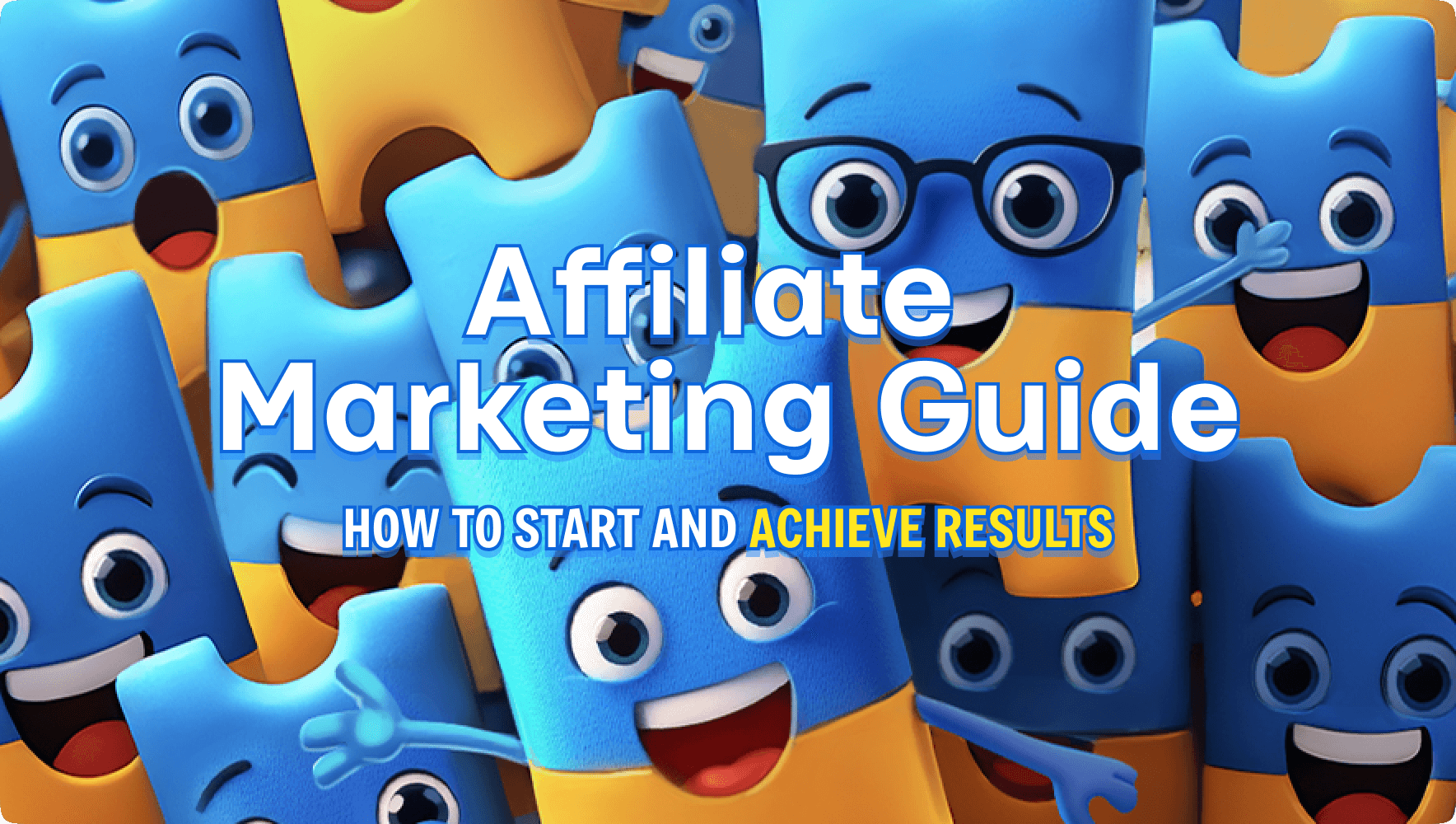
Affiliate marketing is a great way for brands to achieve their marketing goals like bringing more leads, building brand awareness, and driving sales. For Publishers it is a great source of passive income. We created this guide to help you better understand affiliate marketing and how to make the most of it. It is written for both Brands and Publishers. You will learn:
- What is Affiliate marketing, and what are its benefits?
- Who are the main participants?
- What are the main models and different types of Affiliate marketing?
- Which tools are essential for success?
- How to enhance your Affiliate marketing with gamification?
Improve Affiliate Marketing with Gamification
Explore how Winday enhances Affiliate programs with gamified campaigns. See how to get more sales and commissions.
book a personalized demoWhat is Affiliate Marketing?
Affiliate marketing is a promotional model in which Publishers encourage their audiences to purchase services or products or engage with a brand’s digital assets (usually a website) and get monetary compensation once the said goal is achieved. Depending on the model (which we discuss later in this guide), the monetary compensation can be a commission from sale or payment per agreed-upon action.
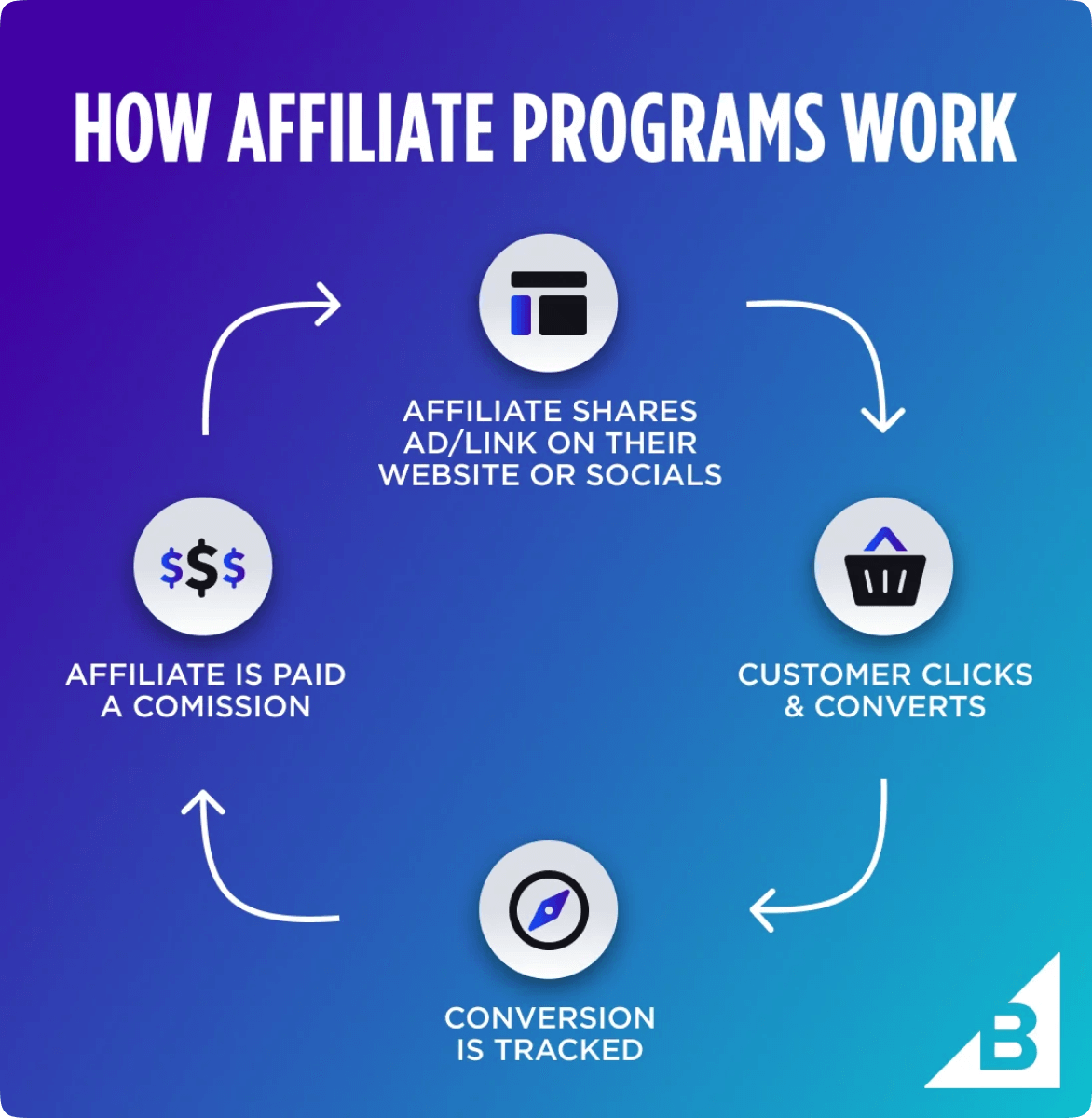
Affiliate marketing uses the trust and social capital of Publishers to build brand awareness, and loyalty, and boost sales. Different models of commission for sale existed prior. However, it’s the Internet and tracking technology that enabled this type of performance-based marketing to become extremely profitable in the past 3 decades. According to Astute Analytica, Affiliate marketing platform market value reached $20B in 2022 and is expected to reach $39B by 2031 with a CAGR of 7.9%
💡 Did You Know?
The first Affiliate program was launched in 1989 by Toby J Williams. He shared links to his store PC Flowers & Gifts and paid a commission for each purchase. 11 years later, he patented Affiliate marketing and tracking.
Benefits of Affiliate Marketing
Affiliate marketing is considered mutually beneficial for the brand promoting its services or goods and the Publisher getting passive income from their digital assets.

An Instagram page dedicated to raccoons with over 190K followers published an Affiliate link to a shop with raccoon-themed T-shirts & hoodies.
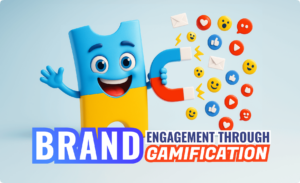
Benefits for Brands
Let’s start with the Affiliate marketing opportunities for brands.
- SEO. Affiliate programs generate backlinks and steady traffic to your website boosting your position in SERP and contributing to your organic search.
- Cost-efficiency. Since it’s a type of performance-based marketing, your company will only pay for reaching a certain goal (sale, click, or views). Meaning you can make minimal investments and gain maximal profits.
- Trust. People trust the Brands they follow and if the Brands recommends products or services or incentives to go visit your digital assets, they are more likely to comply. Trust boosts Brand Engagement and Conversion.
Check out this example below:
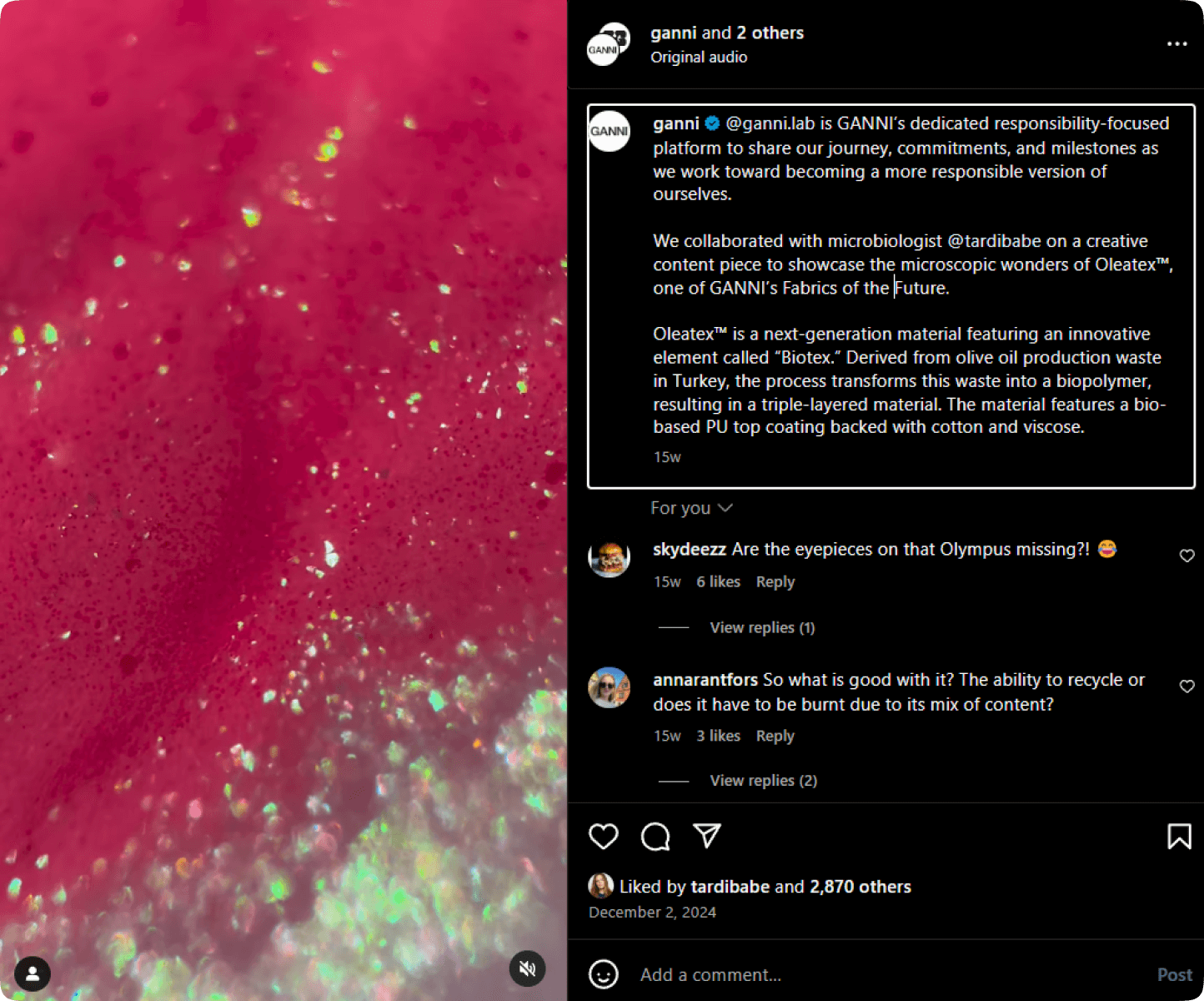
It’s a screenshot of an Instagram post by a microbiologist who frequently posts videos of tiny life forms under a microscope. In this case, she partnered with a scientific platform to show the new material made of recycled products. It creates awareness about the material and the platform and generates interest in her audience to explore more.
Keep in mind that different affiliate marketing types will have different advantages for merchants.
Benefits for Publishers
As mentioned before, Publishers who promote brands also benefit from Affiliate marketing opportunities:
- Passive income.Whether you earn by selling gated content, using your Affiliate Marketing Channels to promote your brand, or doing content just for fun, you can always add additional income by participating in Affiliate programs.
- Ability to get certain products for free. If you use a certain product on a regular basis, it’s always nice to use it for free.
- You can promote favorite brands and important causes. If a company or organization aligns with your values, you can feel like their ambassador by participating in their Affiliate programs.

Unpacking a huge box from a popular lipstick brand on YouTube Shorts. This influencer has just saved hundreds of dollars on free makeup.
Key Participants in Affiliate Marketing
To understand how affiliate marketing works, let’s look closer at its key participants: Publishers, Advertisers, and Affiliate Networks (Platform for Affiliate Marketing). Let’s take a popular British vlogger Eleanor Neale as an example.
1. Publishers (Affiliates)
Publishers or Affiliates are owners of digital assets (like websites or newsletters) also known as Affiliate Marketing Channels or people with a large following on social media who promote Merchants to their audience. There are several types of Publishers:
- Individuals with a large following: Bloggers, Content creators, Influencers
- Email marketers
- Websites: Coupon sites, Loyalty portals, Comparison sites

Example: Over the past six years, Eleanor has published several hundred videos about her passion, and today she has 2.1M subscribers on YouTube, mostly women. Her most popular video has 6.5M views. And over 250 videos on her channel have 1.5M+ views. Though she doesn’t have a website, her online presence and impact on her audience are remarkable. Eleanor often incorporates the promotion of different products/services in her videos and also gives links in the video description.
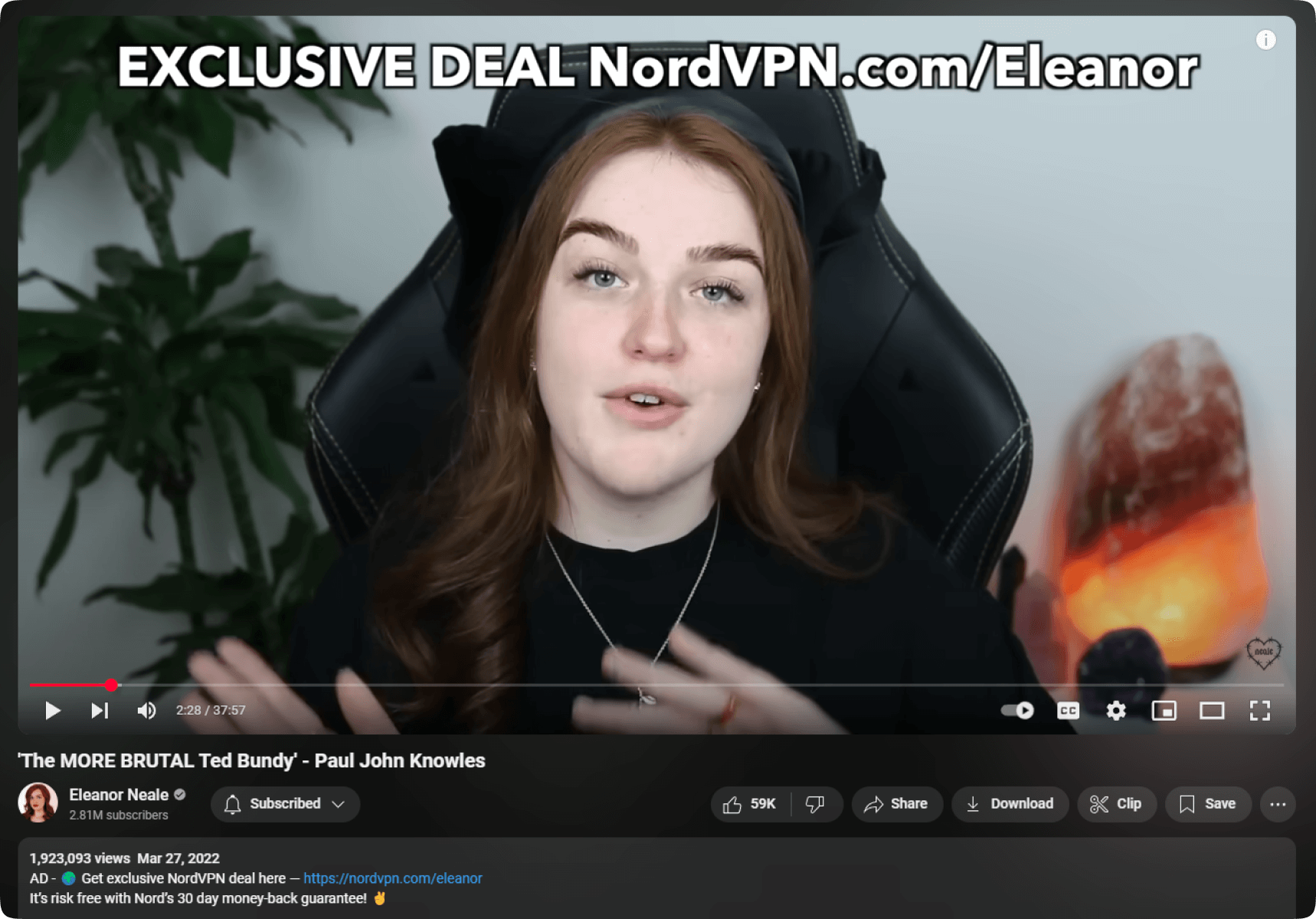
Popular British vlogger advertising a VPN, showing a link in her video and in the description of the video.
🔝 Pro Tip:
To better engage with your audience use marketing gamification. Create a game on the Winday platform in less than 30 minutes and offer it to your Affiliates. Their target audience will click on the link, play your game, and win a discount from your brand. Create up to ten games simultaneously and give different links to your best Affiliates to see who brings you the most customers!
2. Advertisers (Merchants)
Advertisers also known as Merchants are brands that create Affiliate Marketing opportunities to achieve their marketing goals (like increasing traffic, leads, and conversion). There are several types of Merchants:
- Retailers
- Subscription services
- SaaS providers
- Brands (e.g., cosmetics, computers, tools, etc.)
Example: Eleanor was advertising a SaaS VPN with a special link. Though she posted a video back in 2022, people still click on a link as the viewership grows. Here’s what her page on the VPN’s website looks like:
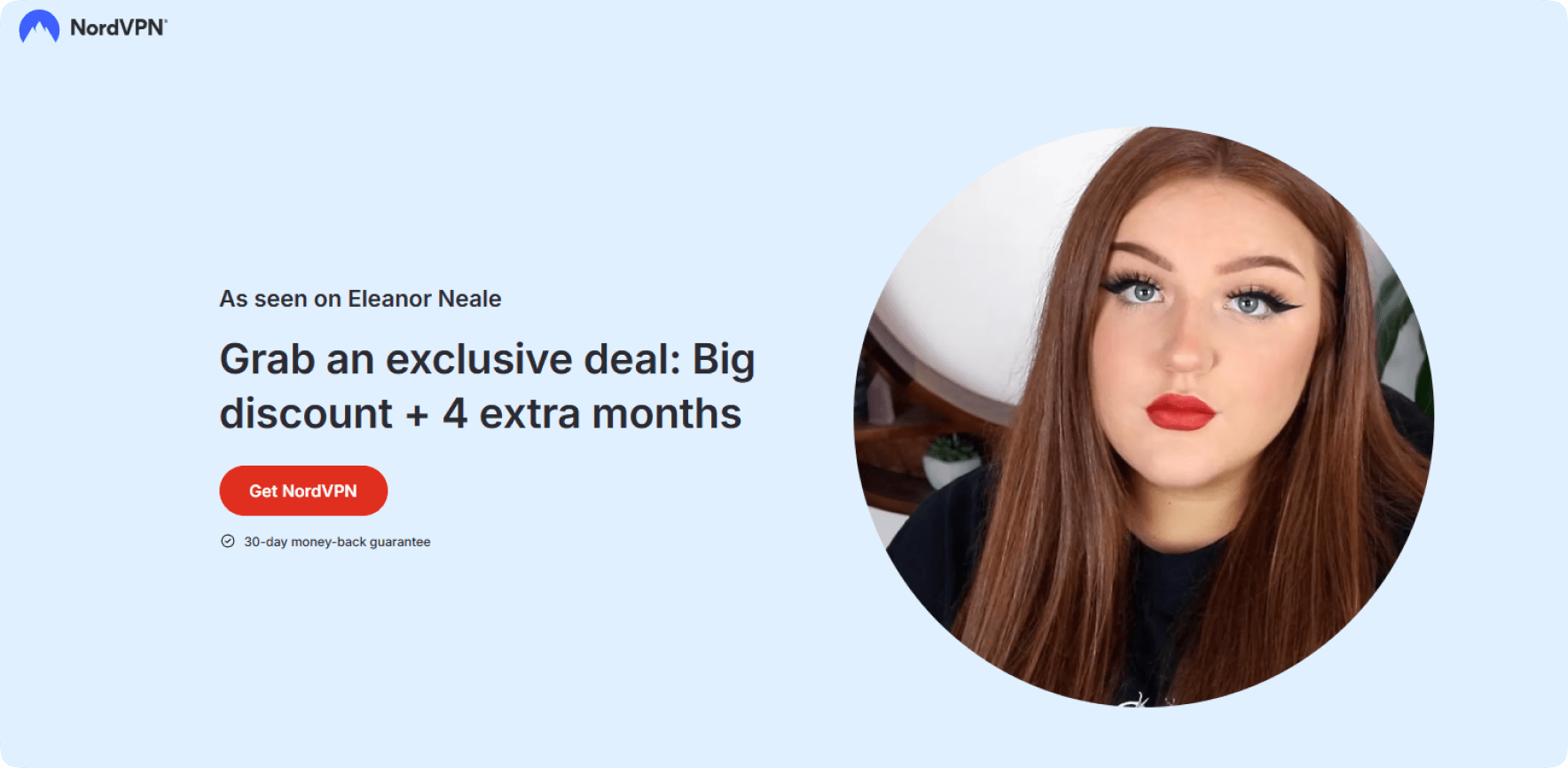
3. Affiliate Networks
Affiliate marketing is all about tracking the performance of each Affiliate. Some brands prefer building internal software that will do the tracking and remuneration. However, only the biggest brands can afford to have an in-house development team. The majority of Merchants prefer to use an Affiliate network (also known as Affiliate Marketing Platform) to do the heavy lifting. In addition to that, SaaS Affiliate networks serve as a marketplace where Merchants can shop for Publishers, and Publishers can “shop” for Merchants (or programs).
Types of Affiliate networks:
- Traditional – usually only gives the opportunity to work with coupon websites and have somewhat outdated technology.
- SaaS Affiliate networks – have more complex and modern functionality and enable you to recruit various types of Publishers like bloggers and influencers.
Examples of Affiliate networks:
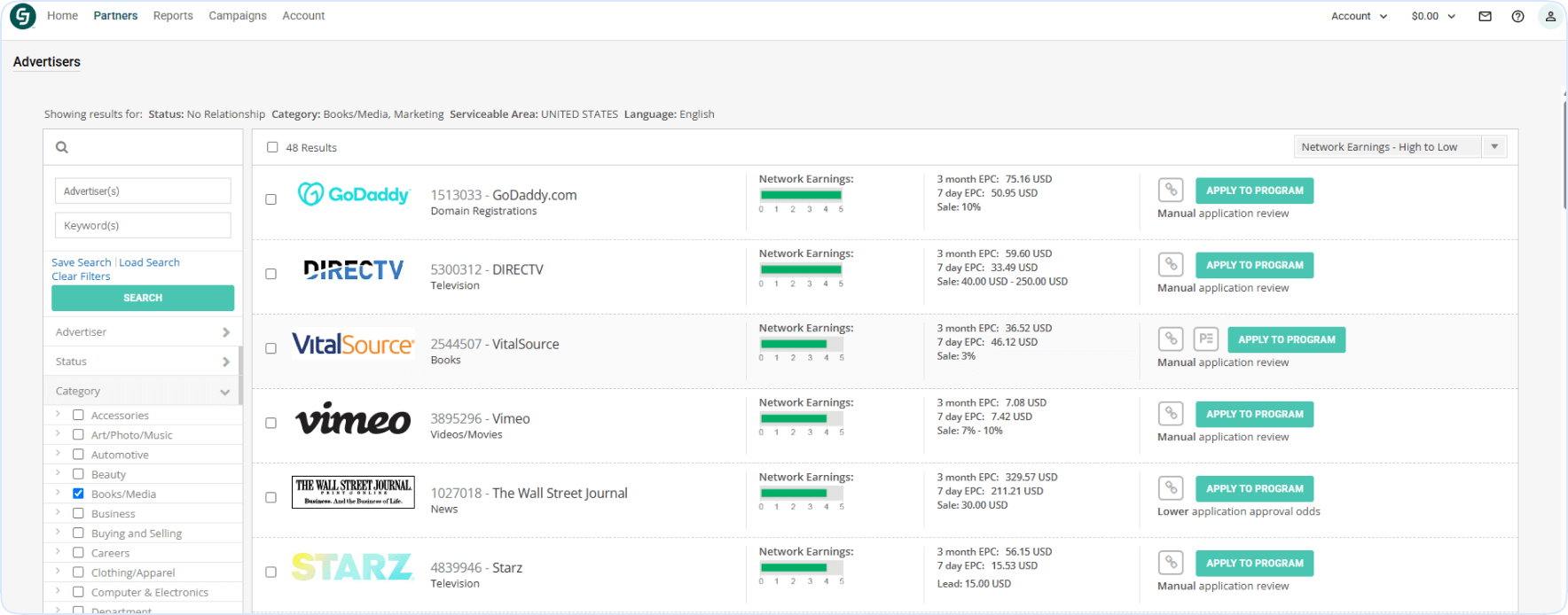
SaaS Affiliate Marketing Site as seen by a Publisher with Merchants sorted by country and industry (“Category” as the platform calls it).
Summing Up: How Affiliate Marketing Works
- Merchant creates an account on the Affiliate Marketing Platform
- The marketing team created an affiliate program
- They look for Publishers to find those that align with their strategy
- They can also receive request from Publishers interested in an affiliate program
- Merchant handpicks the Publishers and provides them with a link
- The link has some sort of tracking either via UTM or other query parameters
- The Publisher places the link on their digital assets
- Once the requirements of the affiliate program are achieved (e.g., sale) the Affiliate Marketing Platform pays the Publisher the commission.
Main Types of Affiliate Marketing
Affiliate marketing is usually categorized by the type of relation between the topic that a Publisher covers and the brand itself. There are three different types of affiliate marketing (unattached, attached, and involved). Each type has its pros and cons. Choosing the type depends on the brand’s Affiliate program for Merchants and the desire of a Publisher to put in an effort into promotion.
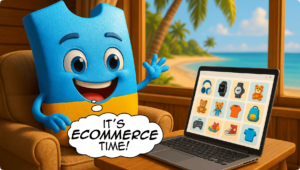
Unattached Affiliate Marketing
One of the easiest Affiliate marketing types suggests that there’s little to no connection between the Publisher’s expertise and the brand itself. It is similar to PPC advertising. The difference is that the link is incorporated into the content and doesn’t look like it’s a banner ad. Check out this screenshot:

An Instagram account dedicated to art selling a bucket lid mouse trap is a good example of unattached Affiliate marketing.
You would think that an account that reposts other creators’ artwork would be offering art supplies. However, this Publisher decided to put minimal effort into an Affiliate program and decided to just place a link in hopes that some of their 4.3M followers would click on it and buy a trap for rodents. Probably it’s because their main source of income is design (as stated in the profile) and they have no capacity for a more involved program.
The pros of unattached Affiliate programs for Publishers:
- Low entry point, meaning Merchants will have minimal selection requirements to accept you as their Affiliate.
- You can put minimal effort into it.
The cons for Publishers: Lower-income because of the low product-audience fit.
The pros of unattached Affiliate programs for Merchants:
- You can engage more Affiliates in this program.
- You don’t need to put an effort into building trust and expertise.
- It’ll give you a lot of backlinks.
The cons for Merchants: Lower level of trust from customers because the Publisher doesn’t have expertise in the promoted products/services.
Wrapping up, this type of Affiliate marketing is great for Publishers that do not want or cannot put too much effort. It fits large retailers that sell generic products and companies that do not want to invest in their brand development.
Related Affiliate Marketing
One of the main issues with unattached Affiliate marketing is a low product-audience fit which results in low trust in the brand and less incentive to engage. Related affiliate marketing fixes this problem by connecting Merchants with Affiliates who have expertise in their unique field and create content that is dedicated to a certain topic. Check out this example:
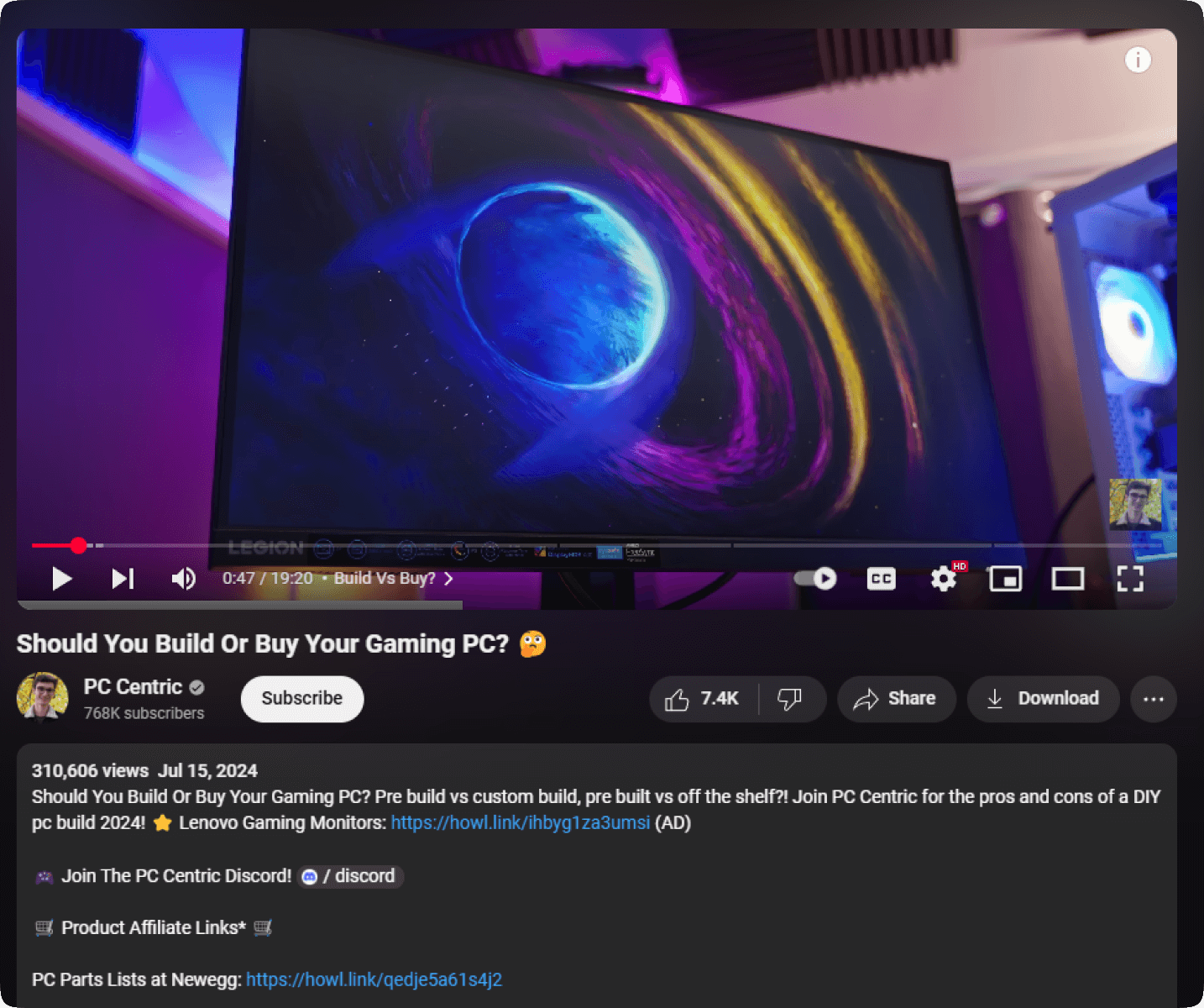
A popular YouTube channel dedicated to gaming on PC showcases a gaming monitor from a popular brand in their video is a great example of related Affiliate marketing.
In the example above we see a great product-audience fit as the subscribers to the YouTube channel seek advice on buying the best gear for gaming. The video covers one of the first questions any gamer would ask when they want to acquire a new PC for their hobby: to buy the setup or to build a PC by purchasing different parts. The promoted product (the gaming monitor) is directly related to the topic.
The pros of related Affiliate programs for Publishers:
- Higher-income due to high product-audience fit.
- You can occasionally get to use products/services you are interested in.
The cons for Publishers:
- You need to put a lot of effort into content creation.
- You need to build expertise and authority in a certain field.
The pros of related Affiliate programs for Merchants:
- You can reach audiences that are “hard to get” like Gen Z.
- You can earn the trust of the potential buyers more easily.
- High conversion rates.
The cons for Merchants:
- You need to nitpick the Publishers.
- The commission might be higher.
Summary: related Affiliate programs are great for companies who want to develop their brand and brand awareness and for Affiliates who have built substantial expertise in a certain subject.
🔝 PRO TIP for Affiliates:
Get the discount codes from a Merchant and use gamification in Affiliate Marketing to raffle the codes among your followers. To achieve it, build a marketing game on the Winday platform in less than 30 minutes to provide a unique and exciting experience. Playing games will help you increase engagement and promote offers from brands in an entertaining way.
Involved Affiliate Marketing
This is probably the hardest among the types of Affiliate marketing. The Publisher not only shows expertise on the subject but also uses brand products or services on a regular basis and is passionate about the brand’s products.
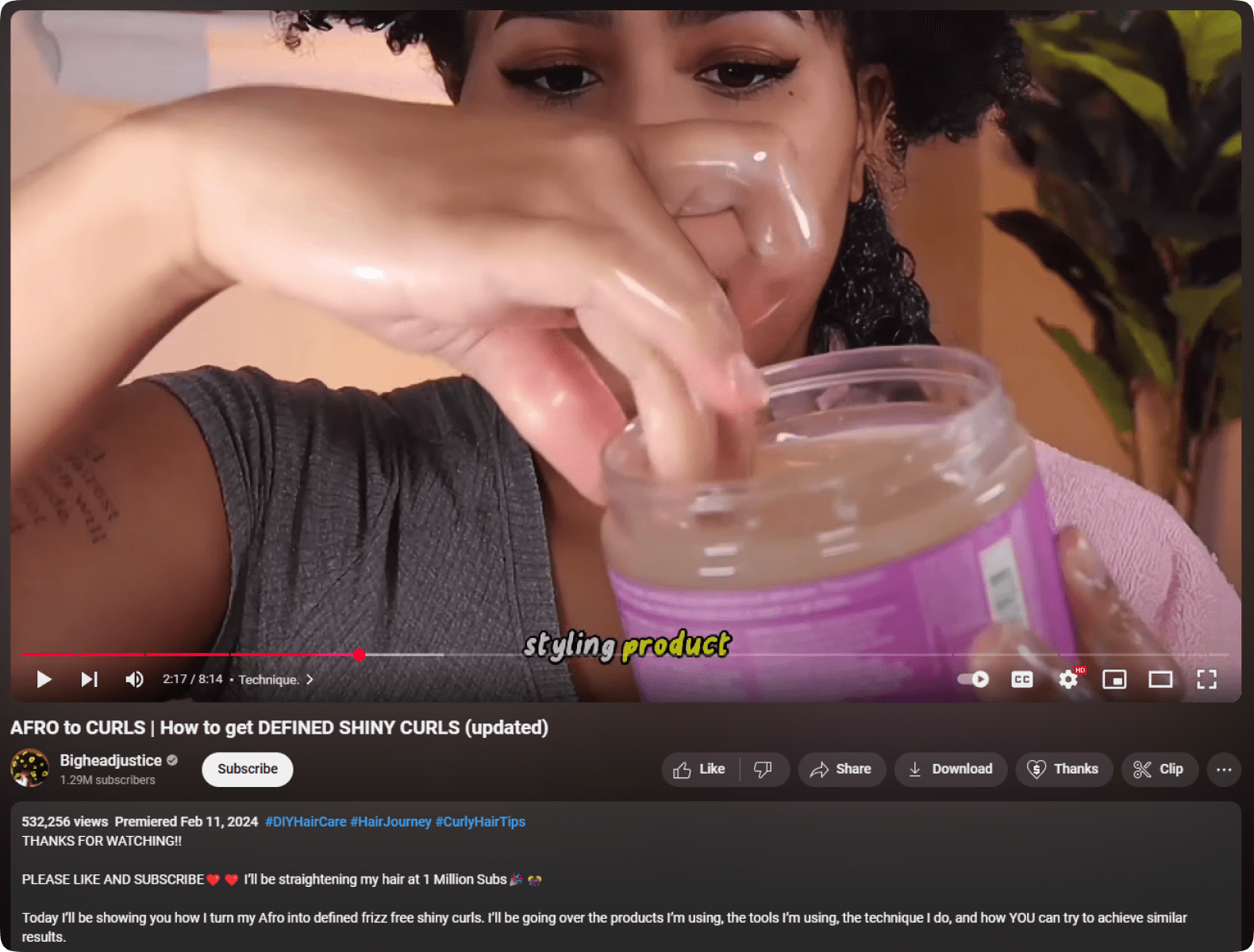
Influencer Justice Jackson showing how to turn Afro into Curls using hair products made specifically for Black Hair is a great example of involved Affiliate marketing.
Taking care of curly hair is hard especially if the coils are so dense and finding good products is difficult. The influencer is not simply promoting the product, she is actively using it and shows the amazing result of the hair care routine at the end of the video. Her followers with similar hair types are watching her videos for actionable tips on care. They can find the links to the products in the description.
The pros of involved Affiliate programs for Publishers:
- Higher income due to high product-audience fit.
- You You can occasionally get to use products/services you are passionate about and use.
- You can authentically promote the brand you genuinely love and believe in.
- Your content makes change and helps your followers.
The cons for Publishers:
- You need to put a lot of effort into content creation.
- You need to build expertise and authority in a certain field.
- It might take a while for the brand you love to choose you (or it may never happen).
The pros of involved Affiliate programs for Merchants:
- You can reach audiences that are “hard to get” including very niche audiences.
- High level of trust.
- High conversion rates.
- You can build brand loyalty.
The cons for Merchants:
- It might be much harder to find a Publisher who is really involved in your brand and maybe impossible if you are only starting.
- The commission might be higher.
Summary: involved Affiliate programs are great for companies with an established brand that want to build loyalty and expand to new markets and for Publishers who are genuinely passionate about certain products/services.
Affiliate Marketing Models
Affiliate marketing models describe the desired customer action for which the Publisher is reimbursed by the Merchant through an Affiliate Marketing Site. There are three main models (PPS, PPL, and PPC).
Pay-per-Sale (PPS)
Today, PPS is the most popular model of Affiliate marketing. As its name suggests, Merchants pay Affiliates once the customer they bring completes a purchase. It’s most popular in retail and e-commerce.

An example of a PPS coupon platform is Winday Club where customers can play games to win discounts.
🔝 Pro Tip:
Promote your products or services in the Winday Club Coupons Platform in an engaging way! Start by creating your first marketing game in less than 30 minutes, generate discount codes, and publish your game on Winday Club!
Pay-Per-Click (PPC)
Today PPC is rarely used in Affiliate marketing as it has shown the best results in paid advertising. Still, to this day, some Merchants and Affiliates use it (see the example of unattached Affiliate marketing type). In a nutshell, the Merchant pays per click on an Affiliate link.
Pay-per-Lead (PPL)
This model is widespread in industries with longer sales cycles and more complex products, for example finance, SaaS, or insurance. The Affiliate receives monetary compensation once the lead they referred to the Merchant converts to the next stage of the funnel. This may include but is not limited to filling out the form on the website with their contact data, free trial registration, or subscription to a newsletter.
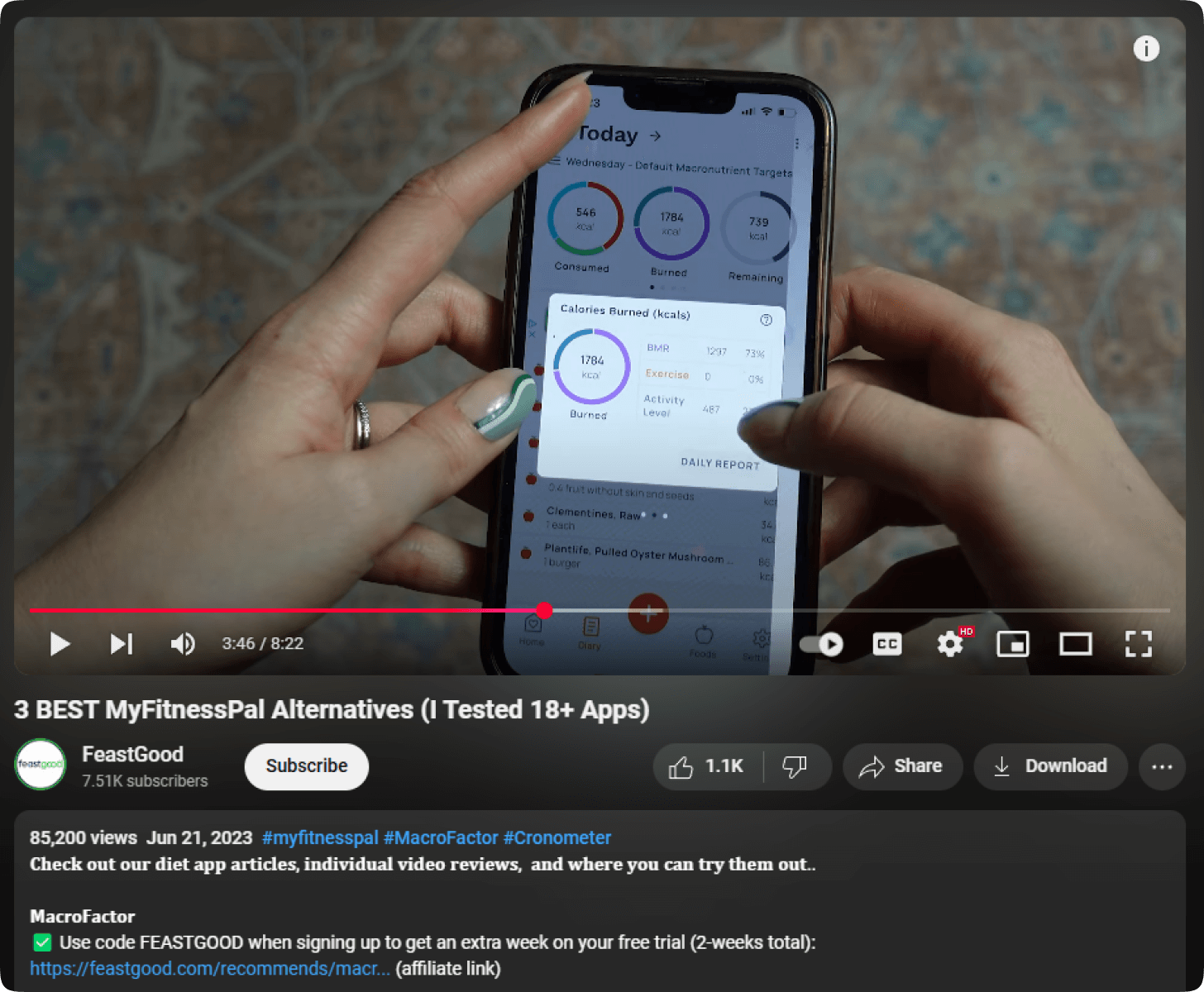
A YouTube channel of nutrition coaches promoting a nutrition tracking application in their video with an affiliate link in the description is a great example of the PPL model.
Essential Affiliate Marketing Tools for Affiliate Marketers & Publishers
In this chapter, we shortlist the necessary tools for Affiliate Marketing that will help you automate your work and enable you to focus on more creative tasks.
For Merchants:
- Social Snowball specializes in automatically converting customers into affiliates, managing payouts, tracking referrals, and maximizing affiliate program efficiency.
- Voluum is a SaaS platform for tracking your ad campaigns.
- Bitly is a platform for shortening links and creating QR codes, both with tracking features.
For Affiliates:
- WordPress is a great platform for building your website.
- Ahrefs is essential for building your website SEO.
- Campaign Monitor is an affordable tool for Email Marketing, easy to set up and use.
- Buffer is a platform for SMM campaigns with post-scheduling and auto-replies.
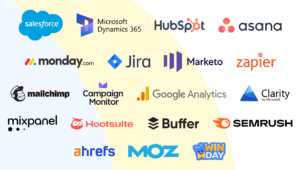
How to Add Gamification in Affiliate Marketing with Winday
One of the recent trends is gamification in Affiliate Marketing. Essentially, it boils down to boosting engagement and conversions by offering potential customers to play casual games and win discounts. In this section of our guide, you will learn how to use gamification to boost Affiliate Programs.
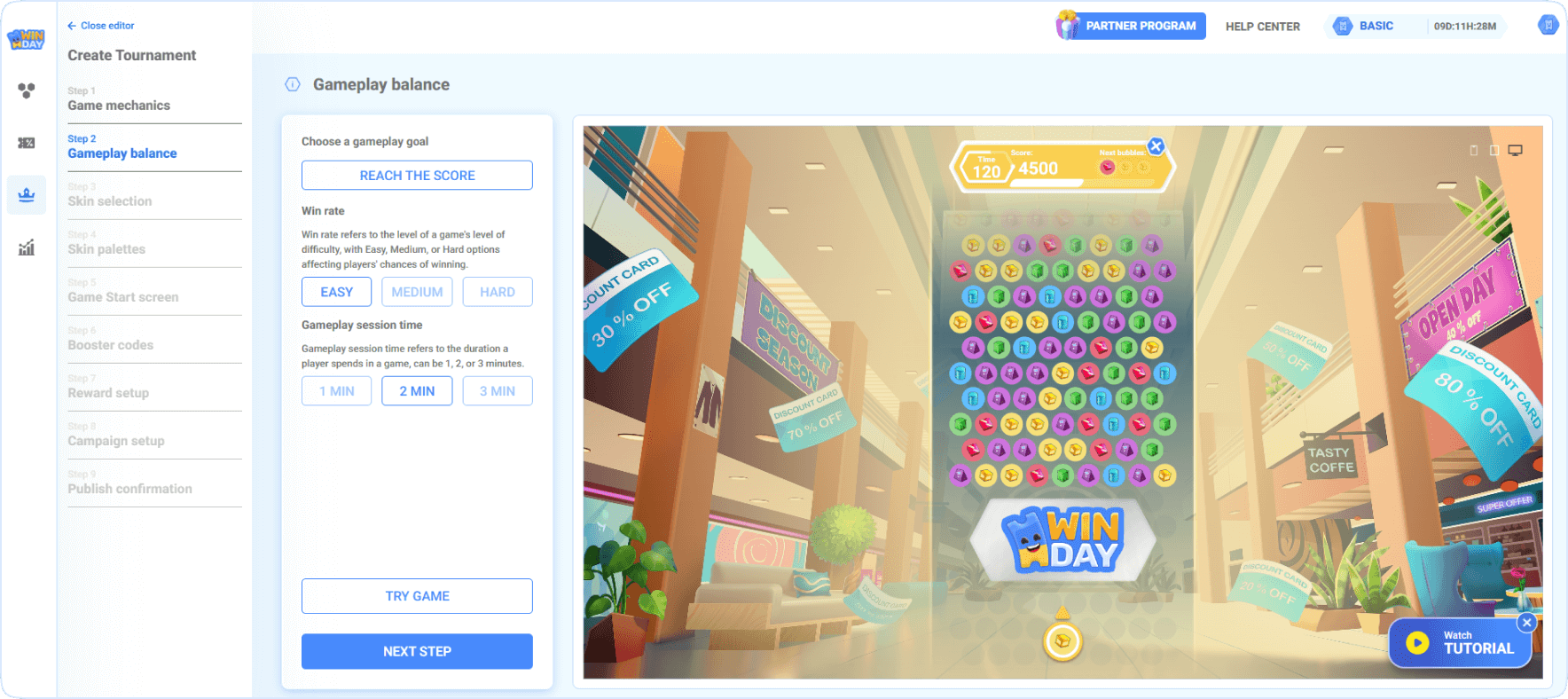
Winday Gamification Platform for Affiliate Marketing.
Winday Club: Gamified Coupon Offers Aggregator
Winday Club is a coupon platform for Affiliate Marketing where customers search for the brand’s discounts or prizes. It can be used by both Merchants and Affiliates to promote their offerings. All you need to do is Create an instant marketing game or a branded marketing tournament and award winners with discounts. Create, publish and get listed on Winday Club to get discovered by new customers.
Benefits:
- Access to your target audience
- Generate traffic to your website
- Drive customer engagement
- Increase conversions and sales
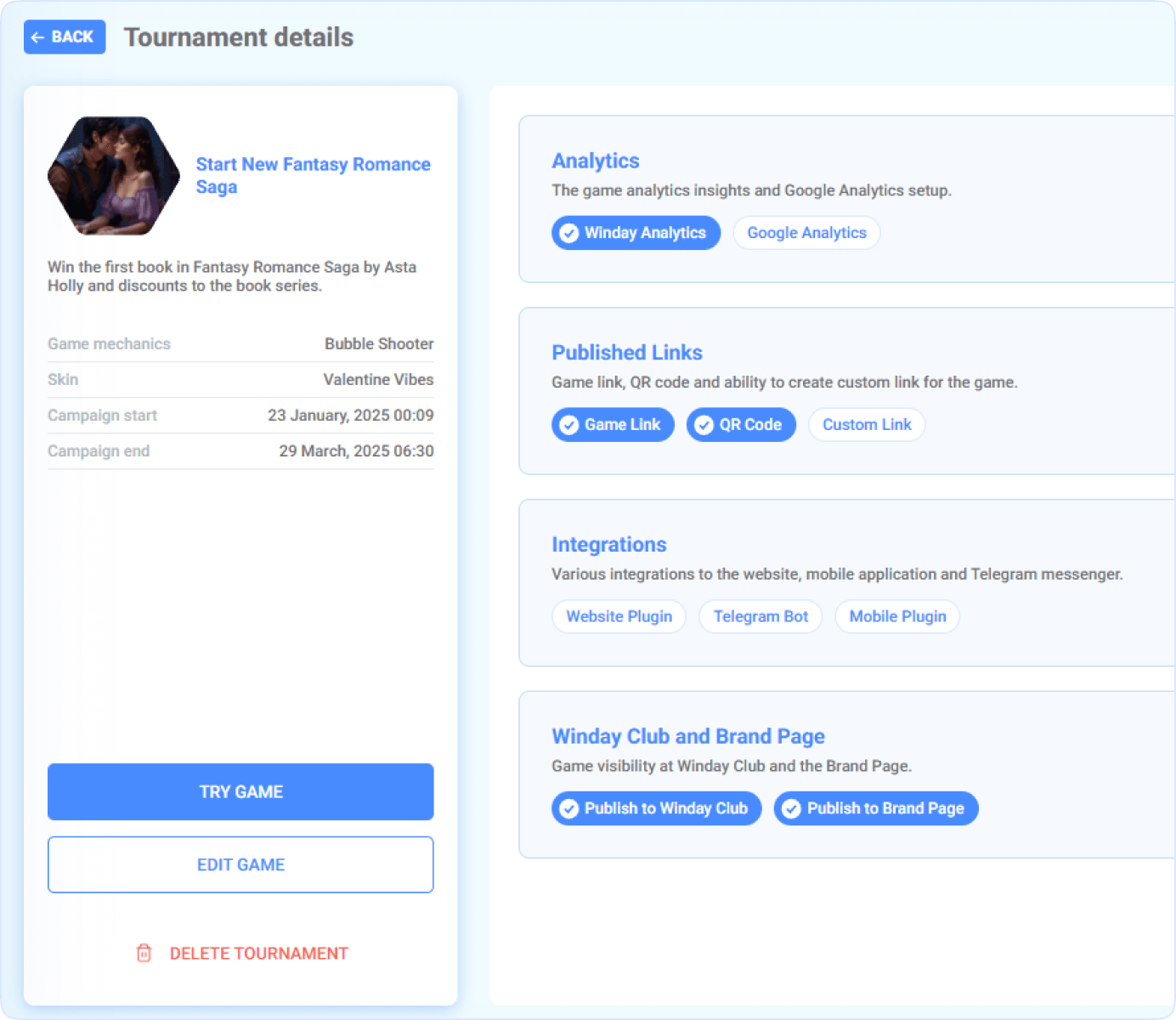
Affiliate Program Integration
Get discount coupons from your Advertisers. Create instant casual games in less than 30 minutes and publish links to the games directly on your website or share links on your Affiliate Marketing Channels. Motivate your target audience to play games to get coupons for promoted services and products. For a structured approach to planning your campaigns, check out our marketing calendar for 2025 to align your promotions with key events and trends.
Benefits:
- Provide a unique and exciting experience to your target audience
- Generate traffic for brands
- Increase your commissions by driving sales
Social Media Influencers & Instant Games
Create instant games and tournaments using Winday Platform and publish your games on your social media. Create gated tournaments for the most loyal followers to motivate them to purchase promoted products and services. If you’re considering a tailored approach, explore the custom marketing games development cost and timeframes to determine the best strategy for your budget and campaign goals.
Benefits:
- Build loyalty of your followers
- Drive more conversions and sales for brand-sponsored products
- Get higher commissions
Winday Partner Program
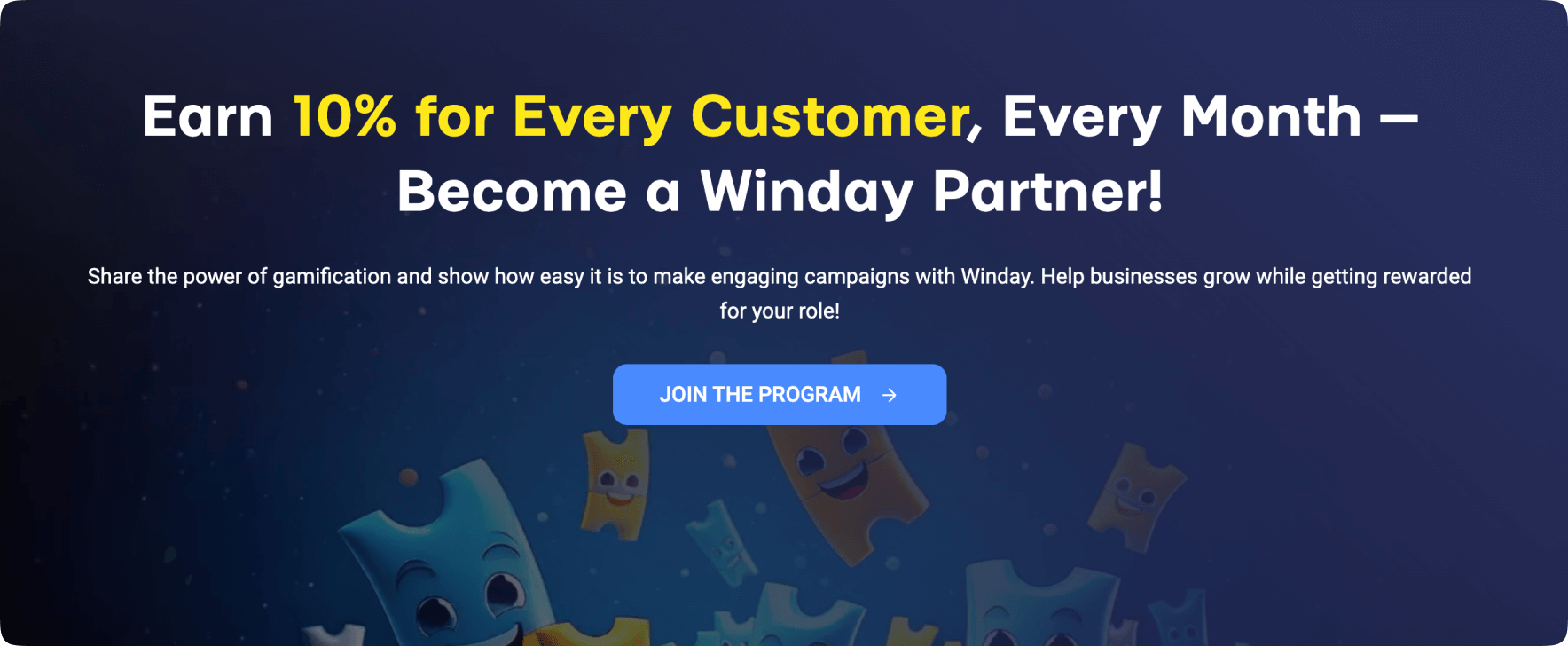
Join the Winday Affiliate Program and become our ambassador! All you need to do is register on our Partner Program and share your affiliate link on your digital assets. Promote marketing gamification with your target audience and get a 10% commission on each month the customer pays!
Wrapping Up:
Affiliate Marketing is a great way to monetize your content and gain passive income by promoting brands. You can choose between several Affiliate marketing types depending on the level of engagement with the brand and the type of reimbursement for your efforts that align with your needs and capabilities. One of the great ways to boost engagement and conversion and get higher commissions is to apply gamification in Affiliate Marketing by creating marketing games with Winday.
Start Winday Free
Start creating marketing games totally for free. Create, publish branded game to upgrade your marketing efforts.
start your free planRate this article
Keep Learning
MarTech Tool Stack to Promote Your Business
Check out an overview of marketing tools available on the market today and learn how to build MarTech Stack that meets your unique business needs.
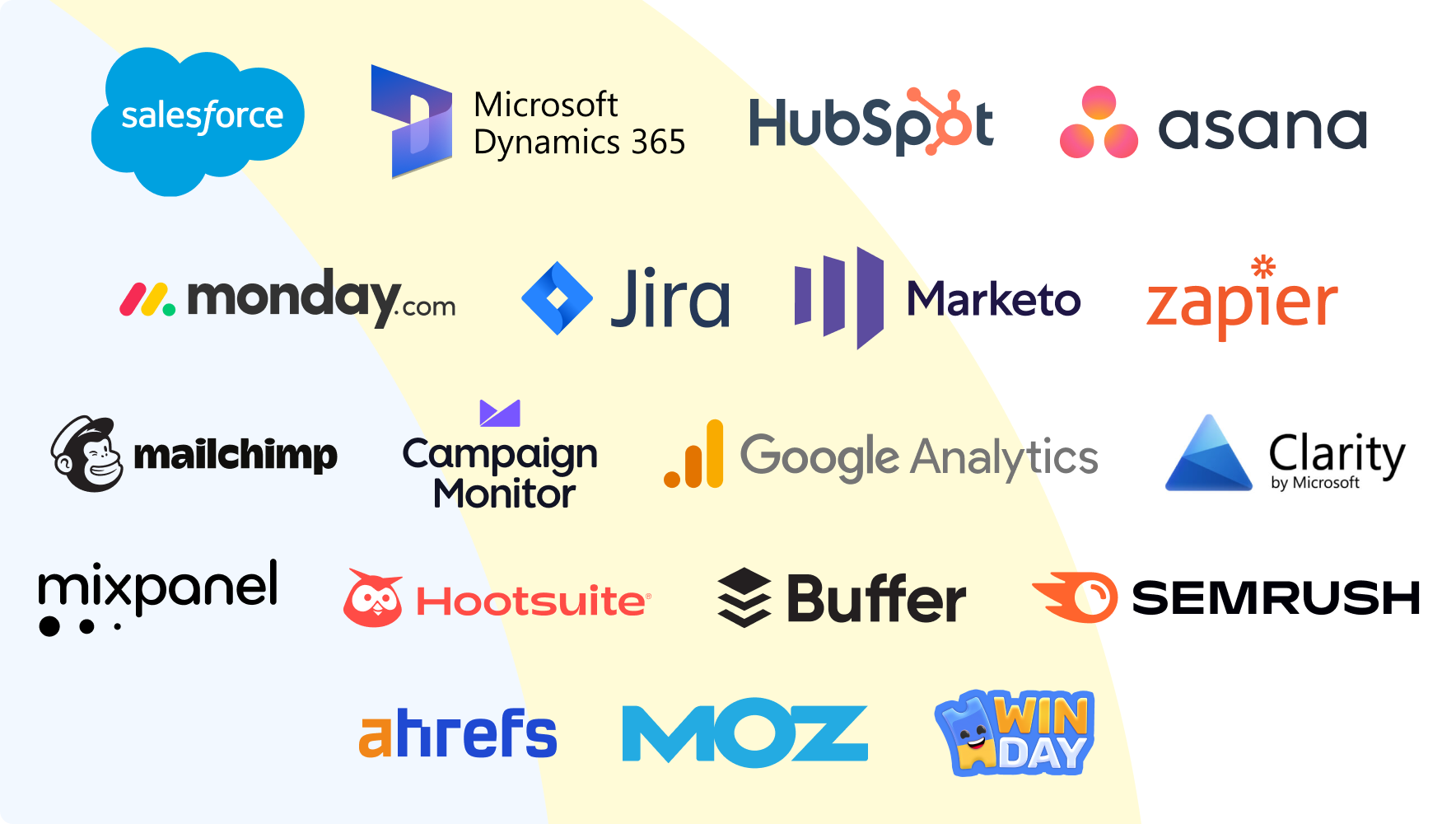
Custom Marketing Game Development vs Using Winday: Budget and Timeframes
Are you interested to know how marketing games are made and what’s the best way to build your very own game? Check out our guide for insights on game dev roadmap, prices & timeframe.
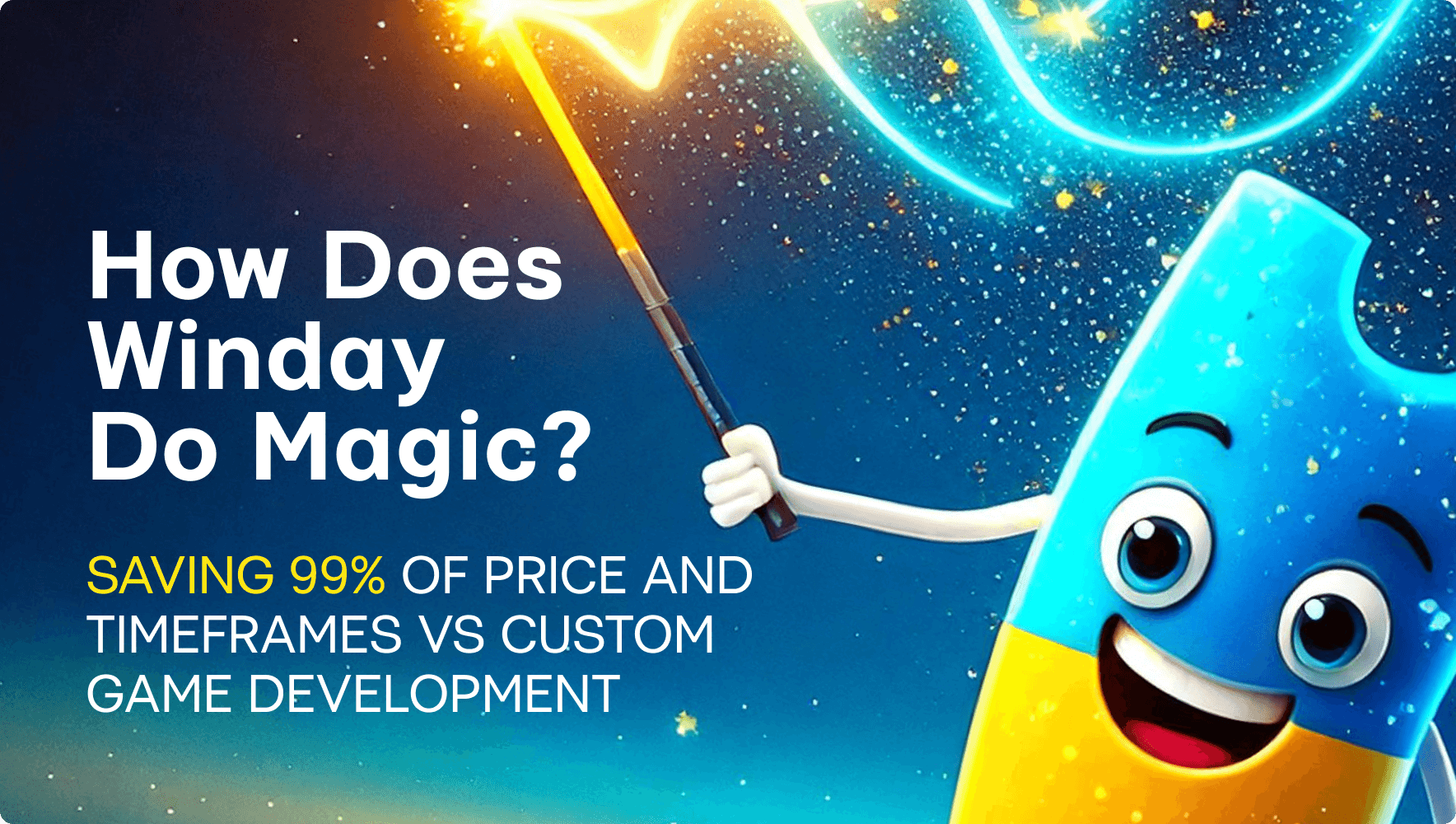
How McDonald’s Uses Gamification in Marketing (How You Can Too with Winday)
McDonald’s is one of the most successful brands using gamification globally. Learn what they do, why it works, and how you can apply the same gamified elements to boost your own brand.


